Ogu Banjeom (오구반점)
962.1M 2021-03-29
60, Supyo-ro, Jung-gu, Seoul
+82-2-2267-0516
It is a store that has been in operation since 1953. This Chinese (cuisine) restaurant is located in Jung-gu, Seoul. The most famous menu is pan-fried dumpling.
Bukchonmaru hanok guesthouse [Korea Quality] / 북촌마루한옥게스트하우스 [한국관광 품질인증]
969.2M 2020-09-10
152, Changdeokgung-gil, Jongno-gu, Seoul
+82-10-3253-8751
Bukchonmaru Hanok Guesthouse is located between “Bukchon Views 2 and 3” on a hill in Bukchon Village in Seoul. This two-storied hanbok building with a terrace, which is rarely found among other hanok structures in the area, offers a splendid view of Seoul. In particular, the summit of a hill next to the main gate of Choong Ang High School where the guesthouse is situated is known as the filming location for the famous Korean TV series Winter Sonata (2002). When you open the main gate and go up to the first floor, a small yard is seen with a group of jars on one side. After entering the sliding door through the yard, there is daecheong maru (main floored room) that features the doors opening in all directions and a high ceiling with rafters, making the space open and cozy. The hanok building consists of two floors – the ground floor is equipped with special furniture, a jar table and a log chair made by the owner, and on the first floor are guestrooms comprised of one large room and two small rooms. The neat and clean rooms are designed in a simple way and have lovely bedding with the pattern of five cardinal colors. Its staff members can speak English and Chinese to communicate with guests from other countries. Every morning, guests engage in animated conversation while enjoying a Korean home-style breakfast prepared by the owner in a friendly atmosphere. After having breakfast, if guests want, they can try on traditional Korean clothes (hanbok) and take photographs inside and around the guesthouse to create interesting memories. The guesthouse also provides a hanbok rental service (KRW 30,000 for a day) and tourists wearing traditional Korean clothes can enter both Changdeokgung Palace and Gyeongbokgung Palace, which can be reached on foot within 10 to 15 minutes, free of charge. Moreover, guests can enjoy an open view of the area including Gahoe-dong, Gye-dong and even the lights of the Namsan Seoul Tower at night from the roof top.
Manseon Hof (만선호프)
972.2M 2021-03-29
19, Eulji-ro 13-gil, Jung-gu, Seoul
+82-2-2274-1040
It is a store frequented by artisans. This Korean dishes restaurant is located in Jung-gu, Seoul. The most famous menu is rolled omelet.
Chamsutgol (참숯골)
976.7M 2019-08-01
16, Mugyo-ro, Jung-gu, Seoul
+82-2-774-2100
Located in Mugyo-dong in Jung-gu, Seoul, Chamsutgol (참숯골) is an upscale restaurant serving hanu beef dishes. The restaurant uses only top quality hanu beef from young cattle (two years old or younger) raised on farms in Jeolla-do Province. For freshness and tenderness, the restaurant serves only fresh meat (not frozen) of A+ grade or higher. To bring out its juiciness and tenderness, the meat is grilled on a charcoal fire.
The elegant ambience and décor and the variety of rooms in different sizes make the restaurant a favorite choice for special events. It is also regularly visited by international tourists. Popular dishes are the sirloin steak and marinated ribs, doengjang soup, and yeongyang dolsotbap (rice served in a hot stone bowl).
Dialogue in the Dark – Bukchon (어둠속의대화 북촌점)
978.6M 2025-07-04
Gahoe-dong, Jongno-gu, Séoul (Corée du Sud)
Située près du palais Gyeongbokgung, Dialogue in the Dark – Bukchon est une exposition participative sensorielle unique qui se déroule dans l’obscurité totale pendant 100 minutes. Accompagnés par un·e Roadmaster, les participants explorent différents environnements uniquement à travers les sens du toucher, de l’ouïe, de l’odorat et du goût.
Créée en Allemagne en 1988, cette exposition internationale a été présentée dans plus de 161 villes à travers le monde, touchant plus de 12 millions de visiteurs en Europe, en Asie et en Amérique.
Les visiteurs doivent arriver 15 minutes avant l’heure de réservation pour retirer leurs billets, déposer leurs affaires personnelles et se préparer à l’expérience. L’entrée se fait à l’heure exacte via un ascenseur menant progressivement vers une obscurité complète. Pendant 100 minutes, aucune sortie n’est possible ; il est donc essentiel d’utiliser les toilettes à l’avance.
L’exposition est située à 700 m de la sortie 2 de la station de métro Anguk (ligne 3). Le quartier de Bukchon et ses environs, proches du palais Gyeongbokgung, offrent également de nombreux cafés et restaurants à découvrir avant ou après l’expérience.
Musée National du Palais de Corée (국립고궁박물관)
987.0M 2023-03-24
12, Hyoja-ro, Jongno-gu, Seoul
+82-2-3701-7500
Inauguré en 1992 sous le nom du Musée royal, l’actuel Musée national du palais de Corée expose des reliques du royaume de Joseon (1392-1910). Près de 20.000 reliques royales des palais Gyeongbokgung, Changdeokgung, et Changgyeonggung ainsi que celles du sanctuaire de Jongmyo y sont présentées.
1. Symboles et documents royaux (Royal Symbols and Records) - La dynastie Joseon soutenant les idéaux confucianistes, le roi était donc considéré comme le souverain absolu, et le couple royal faisait figure, avec la reine, de parents de tout le peuple. Pour rehausser son autorité, la dynastie a fait fabriquer divers symboles royaux.
2. Rites ancestraux (Ancestral Rites) - Un rite ancestral se tenait dans un sanctuaire abritant les tablettes des rois et des reines de la dynastie Joseon. Ce rite était non seulement une cérémonie de culte de la famille royale mais aussi une fête de musique et de danse célébrée pour souhaiter le salut et la prospérité éternelle du pays.
3. Architecture du palais (Palace Architecture) – Le palais était une demeure pour le roi et sa famille, et le centre de politique et d’administration, où le roi gouvernait le pays. Le centre du palais de la dynastie Joseon, suivant les plans d’architecture traditionnelle, comprenait Jeongjeon, le hall principal comme centre des événements de l’Etat et de discussions politiques, et Pyeonjeon, l’office du gouvernement.
4. Sciences de Joseon (Joseon Sciences) – Durant sa première période, la dynastie Joseon oeuvrait à établir la légitimité de sa fondation et à enrichir le pays. Afin de réaliser ces idéaux, la dynastie promouvait comme jamais auparavant des domaines tels que les sciences ou la médecine et développait diverses armes pour la défense nationale.
5. Vie de la famille royale (Royal Life) - Le roi et la reine étaient les figures symboliques de la dynastie Joseon, mais ils étaient également comme le peuple ordinaire dans leur vie privée au palais. Le palais était divisé en différentes sections : office du roi, demeure pour la reine, bureau du prince héritier. Chaque espace contenait des meubles appropriés, qui étaient fabriqués avec des matériaux de haute qualité selon de stricts critères pour la famille royale.
Gogung Tteurak (고궁뜨락)
989.0M 2020-04-17
12, Hyoja-ro, Jongno-gu, Seoul
+82-2-720-0486
Located on the first floor of the National Palace Museum of Korea, Gogung Tteurak consists of a museum shop and a café. It is open from 09:00 to 18:00 during the weekdays and up to 21:00 on Wednesdays and Saturdays. It operates without closing days as of January 1, 2017.
New Seoul Hotel (뉴서울호텔)
992.3M 2021-05-11
16, Sejong-daero 22-gil, Jung-gu, Seoul
+82-2-735-8800
New Seoul Hotel is conveniently located in central Seoul near City Hall, providing guests with easy access to shopping, sightseeing, and more. The guestrooms are outfitted with modern amenities for a comfortable stay, and the hotel has several dining, entertainment and convenience facilities such as a business center, a souvenir shop and men's sauna.
Samjeon Hoejeon Chobap (삼전회전초밥)
996.2M 2019-06-19
21, Sejong-daero 23-gil, Jongno-gu, Seoul
+82-2-735-1748
At Samjeon Hoejeon Chobap, you can sit back and relax as fresh sushi dishes such as eel sushi, tuna sushi, salmon sushi, and shrimp sushi come by you on the conveyor belt. The system allows you to avoid waiting for food and pick and choose your favorite dishes. Sushi dishes are made of fresh fish delivered daily so you can rest assured that you’re eating only top quality sushi.
The restaurant is conveniently located in central Seoul in the Gwanghwamun area near major landmarks such as City Hall, the Sejong Center for the Performing Arts, and Cheonggyecheon, making the restaurant a convenient stopover during a busy day of touring.
Châtaigne (샤떼뉴)
1.0Km 2021-12-29
19, Samcheong-ro 5-gil, Jongno-gu, Seoul
+82-2-736-5385
Châtaigne is a French restaurant housed in a charming hanok (traditional Korean house) that was remodelled to accommodate dining tables and chairs. Châtaigne uses seasonal ingredients to create a simple and unique French course meal.
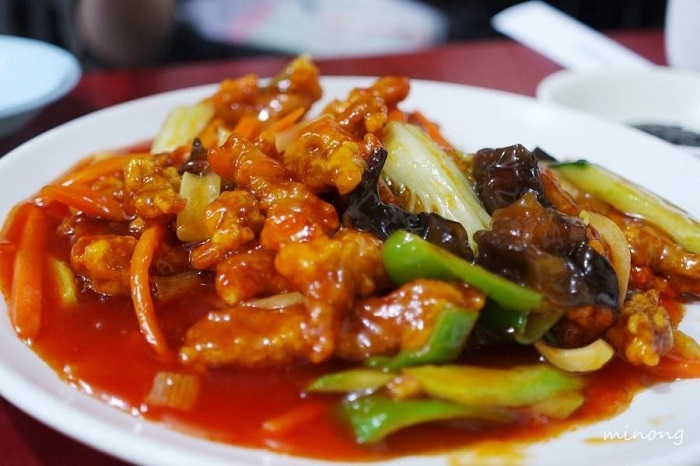
![Bukchonmaru hanok guesthouse [Korea Quality] / 북촌마루한옥게스트하우스 [한국관광 품질인증]](http://tong.visitkorea.or.kr/cms/resource/32/2574032_image2_1.jpg)
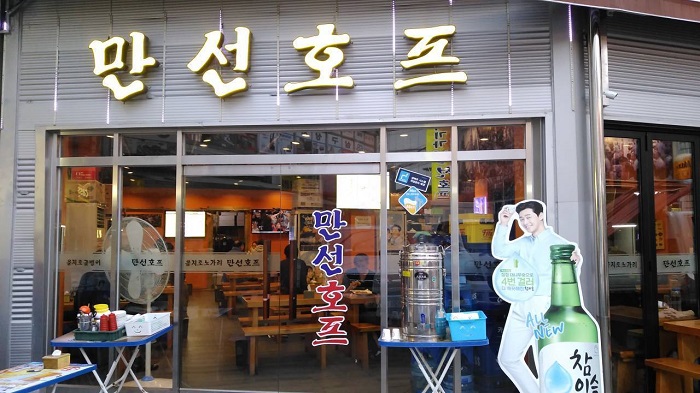
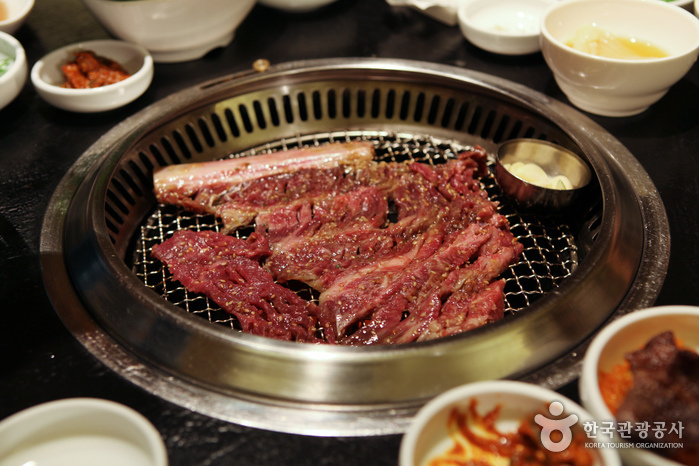
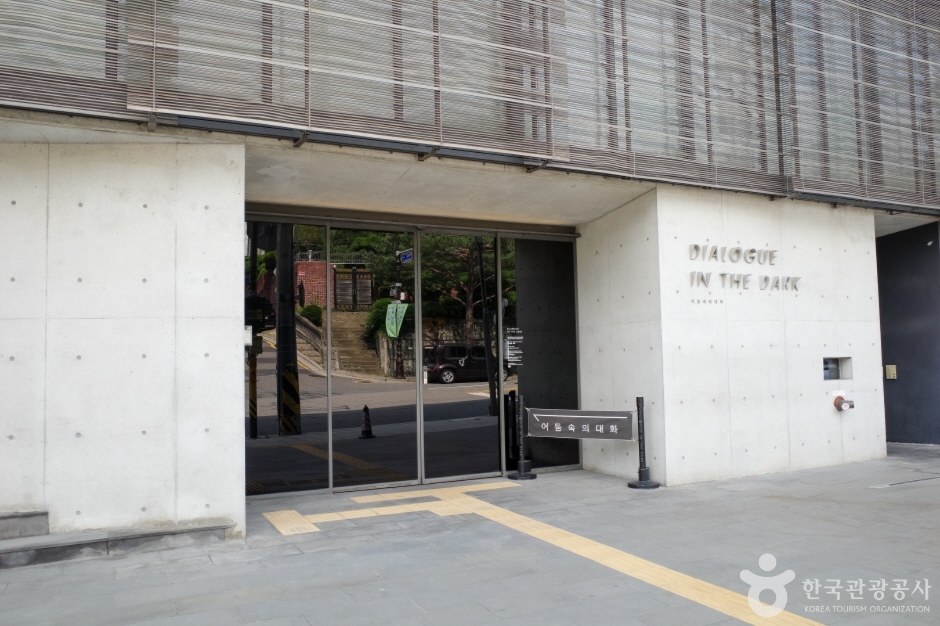
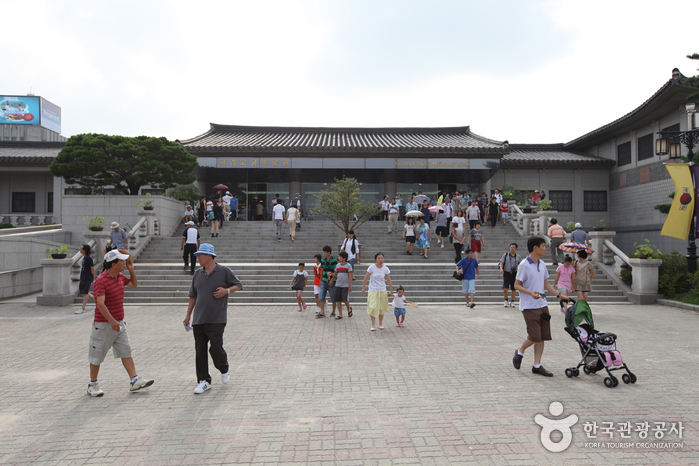
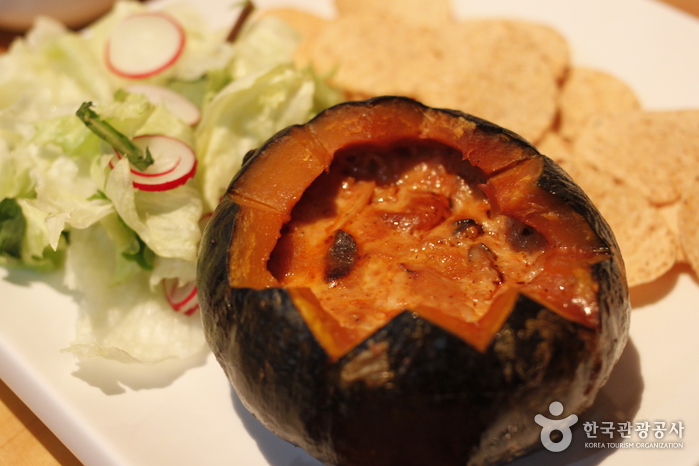
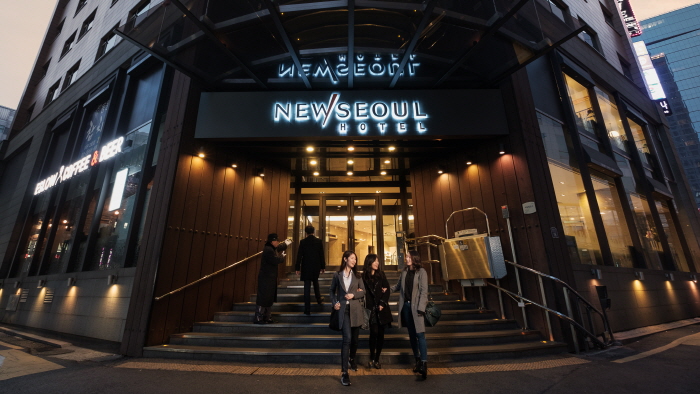
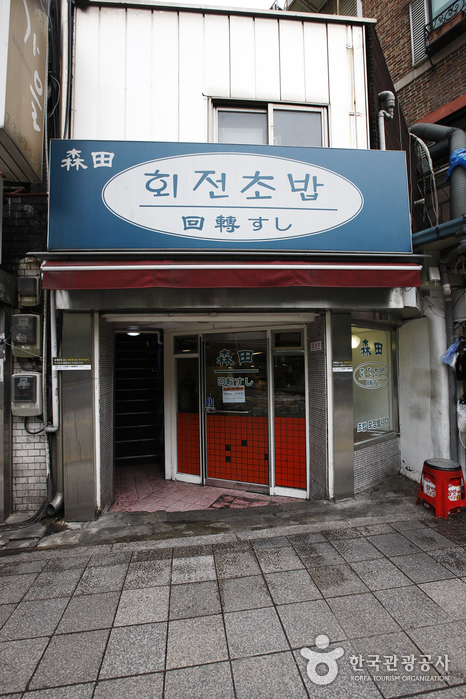
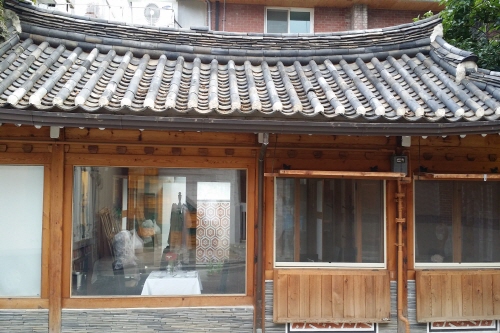
 Français
Français
 한국어
한국어 English
English 日本語
日本語 中文(简体)
中文(简体) Deutsch
Deutsch Español
Español Русский
Русский